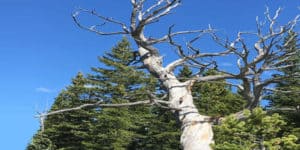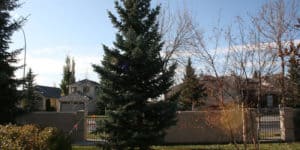Blog
The Six Scariest Looking Trees in the World
When people are asked to think of something scary, their first thought isn’t usually a tree. Trees are often described as beautiful and majestic, not terrifying and unnerving. However, with their gangly limbs, twisted trunks and dead bark, some trees can actually be pretty scary. Not convinced? The following six trees will show you just…
Is Your Tree Suited for a Tree House?
Childhood is a time of wonder and imagination, and playing outdoors gives children a place to explore worlds of their own creation without relying on digital entertainment sources. One perfect environment for kids to cultivate a vivid imagination is a private tree house. In a tree house, kids can pretend to be high-seas pirates, adventurous…
Trees through the Ages: Trees in Mythology
Since the beginning of history, humankind has regarded trees with wonder. Almost without exception, every people, through religion and culture, features myths and legends about trees. Many of these cultures still revere specific tree species today because of these stories and use them in their landscaping.
Low-Maintenance Trees for Your Yard
Owning a home brings the responsibility of managing the yard space around the home. That task involves more than mowing the lawn and pulling the weeds. It also entails landscaping a yard that matches your desires. For young families, the perfect yard often means a fenced-in area for kids to roam free. For retired couples,…
Winter Injury of Evergreens
Recognize the Symptoms of Winter Injuries Browning of evergreens in the spring is often a sign of winter injury. Since evergreens keep their needles all year, they lose moisture continuously and can easily become too dry. Symptoms Symptoms of winter injury will vary depending on the type of evergreen and the severity of the damage.…
Nutrient Deficiency
Learn the Causes of Poor Growth & Yellow Leaves Nutrient deficiency is the most common and serious cause for poor tree health in our region. Poor growth, lack of vigor, twig and branch dieback, pale green or yellow leaves are all symptoms of nutrient deficiency. Poor soil and soil with high alkalinity are the two…
Mechanical Injury
Treat the Wounds to Your Trees Regardless of the cause of injury, all wounds should be treated the same. Do not use pruning paint! Tar and heavy coatings of asphalt all tend to seal in decay and prevent or inhibit the production of callous tissue around the wound site. Generally, all that is needed is…
Fall Needle Shed
Causes of Needle Browning & Needle Shed Yellowing and browning of needles in the fall is a normal occurrence on pine, spruce, cedar and juniper. The discolouration, which affects the older needles closer to the trunk, can begin in early August and continue until freeze up. Needle drop can occur in the fall or over…
Dieback of Birch
Keep Your Birch Trees Watered & Healthy Birch dieback is usually caused by a lack of water. In their native habitat, birch grow in moist locations, usually near lakes and streams – conditions not found in most yards. Damage Sparse foliage and dead branches at the tops of birch trees are a common sight. The…
Plant Problems
Injuries, Nutrient Deficiencies & More Sometimes your trees and shrubs will experience noticeable problems for reasons that are not immediately apparent, and are not due to insects or disease. At ArborCare Tree Service, serving clients across Western Canada, we have the experience necessary to help keep your plants healthy. Whether your birch is suffering from…





